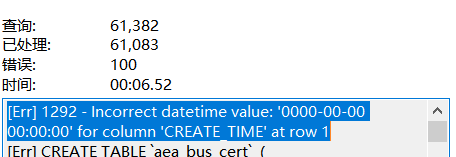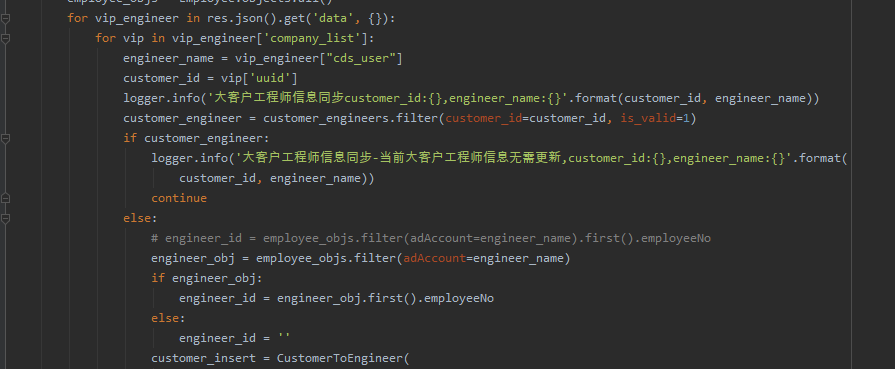《jdk源码解析-java中的ThreadLocal类》首发橙寂博客转发请加此提示
jdk源码解析-java中的ThreadLocal类
关于ThreadLocal这个类,应该很多人都使用过。我们可以认为这是一个操作线程间局部对象的工具类。
首先我们看下官方解释
This class provides thread-local variables. These variables differ from
their normal counterparts in that each thread that accesses one (via its
{@code get} or {@code set} method) has its own, independently initialized
copy of the variable. {@code ThreadLocal} instances are typically private
static fields in classes that wish to associate state with a thread (e.g.,
a user ID or Transaction ID).
官方的意思大概是:
此类提供线程局部变量。 这些变量不同于
它们的正常对应部分是,每个线程(通过
{@code get}或{@code set}方法)get/set有自己的,线程间互不影响的独立初始化的
变量的副本。 {@code ThreadLocal}实例通常是私有的
希望将状态与线程相关联的类中的静态字段(例如,
用户ID或交易ID)。
为什么我把ThreadLocal作为了一个工具类存在?在我们的使用用我们经常使用get跟set方法。就能在当前线程下取得或设置一个value。事实上这个对象也并
没有很多骚东西也就是一个入口而已,以及负责维护Thread跟ThreadLocalMap的一些关系,但是看本文的关键点也是理清ThreadLocalMap,ThreadLocal,Thread,Entry之间的关系。
下面简单看一下ThreadLocal的get与set方法。
/**
* Sets the current thread's copy of this thread-local variable
* to the specified value. Most subclasses will have no need to
* override this method, relying solely on the {@link #initialValue}
* method to set the values of thread-locals.
*
* @param value the value to be stored in the current thread's copy of
* this thread-local.
*/
public void set(T value) {
//获取当前线程中ThreadLocalMap对象
Thread t = Thread.currentThread();
ThreadLocalMap map = getMap(t);
if (map != null)
map.set(this, value);
else
//在当前线程下创建一个map并设置value
createMap(t, value);
}
/**
* Returns the value in the current thread's copy of this
* thread-local variable. If the variable has no value for the
* current thread, it is first initialized to the value returned
* by an invocation of the {@link #initialValue} method.
*
* @return the current thread's value of this thread-local
*/
public T get() {
//获得当前线程
Thread t = Thread.currentThread();
//获得当前线程的ThreadLocalMap对象
ThreadLocalMap map = getMap(t);
if (map != null) {
//获取map中的具体存取的数据。通过ThreadLocal对象实例。
ThreadLocalMap.Entry e = map.getEntry(this);
if (e != null) {
@SuppressWarnings("unchecked")
T result = (T)e.value;
return result;
//创建一个map设置一个默认值。
return setInitialValue();
}由上可以看出
ThreadLocal负责维护Thread跟ThreadLocalMap的关系。ThreadLocal是作为ThreadLocalMap
key存在的负责存取数据的是ThreadLocalMap。具体存取的数据结构
是ThreadLocalMap中的Entry类。
ThreadLocalMap
先从数据结构来分析ThreadLocalMap
-
ThreadLocalMap是ThreadLocal的内置静态类。Thread中内置了一个ThreadLocalMap的属性threadLocals默认是为null的。 -
ThreadLocalMap内置了Entry类。ThreadLocalMap中内置了一个关键属性Entry类型的数组tables。tables是用来存具体数据的。在ThreadLocalMap`中。数组的下标是以
ThreadLocal中的threadLocalHashCode值作为下标的。这里threadLocalHashCode是原子性的
-
Entry类扩展了WeakReference(弱引用)这一点记住要考的(详情看下面代码)。其中只内置了一个Object类型的value属性。
* ThreadLocalMap is a customized hash map suitable only for
* maintaining thread local values. No operations are exported
* outside of the ThreadLocal class. The class is package private to
* allow declaration of fields in class Thread. To help deal with
* very large and long-lived usages, the hash table entries use
* WeakReferences for keys. However, since reference queues are not
* used, stale entries are guaranteed to be removed only when
* the table starts running out of space.
*/
static class ThreadLocalMap {
/**
* The entries in this hash map extend WeakReference, using
* its main ref field as the key (which is always a
* ThreadLocal object). Note that null keys (i.e. entry.get()
* == null) mean that the key is no longer referenced, so the
* entry can be expunged from table. Such entries are referred to
* as "stale entries" in the code that follows.
*/
//继承WeakReference保证了key一定要为ThreadLocal对象,如果ThreadLocal被回收了。ThreadLocalMap也会回收并不会报错。
//这里建议看一下强引用与弱引用的区别
static class Entry extends WeakReference<ThreadLocal<?>> {
/** The value associated with this ThreadLocal. */
Object value;
Entry(ThreadLocal<?> k, Object v) {
super(k);
value = v;
}
}
/**
* The initial capacity -- MUST be a power of two.
*/
//默认数组大写为16扩容建议*2
private static final int INITIAL_CAPACITY = 16;
/**
* The table, resized as necessary.
* table.length MUST always be a power of two.
*/
//具体存数据的table
private Entry[] table;
/**
* The number of entries in the table.
*/
//存取的条目
private int size = 0;
/**
* The next size value at which to resize.
*/
//下一个要扩容的大小
private int threshold; // Default to 0
}由以上设计我们就能分析出,一个线程能存多个不同ThreadLocal来管理的对象。一个ThreadLocal只能对应一个线程的ThreadLocalMap。由于存取的
数据结构的对应关系是以ThreadLocal的hash值来对应的。所以不同线程间的对象都是独立的。
ThreadLocalMap的几个关键方法解析
-
ThreadLocalMap的getEntry方法
/**
* Get the entry associated with key. This method
* itself handles only the fast path: a direct hit of existing
* key. It otherwise relays to getEntryAfterMiss. This is
* designed to maximize performance for direct hits, in part
* by making this method readily inlinable.
*
* @param key the thread local object
* @return the entry associated with key, or null if no such
*/
//通过ThreadLocal获得了value的值
//如果获取不到那么会调转到getEntryAfterMiss这个方法
private Entry getEntry(ThreadLocal<?> key) {
int i = key.threadLocalHashCode & (table.length - 1);
Entry e = table[i];
if (e != null && e.get() == key)
return e;
else
return getEntryAfterMiss(key, i, e);
}
/**
* Version of getEntry method for use when key is not found in
* its direct hash slot.
*
* @param key the thread local object
* @param i the table index for key's hash code
* @param e the entry at table[i]
* @return the entry associated with key, or null if no such
*/
private Entry getEntryAfterMiss(ThreadLocal<?> key, int i, Entry e) {
Entry[] tab = table;
int len = tab.length;
while (e != null) {
ThreadLocal<?> k = e.get();
if (k == key)
return e;
if (k == null)
//清空插槽
expungeStaleEntry(i);
else
i = nextIndex(i, len);
e = tab[i];
}
return null;
}
-
ThreadLocalMap的set方法
/**
* Set the value associated with key.
*
* @param key the thread local object
* @param value the value to be set
*/
private void set(ThreadLocal<?> key, Object value) {
// We don't use a fast path as with get() because it is at
// least as common to use set() to create new entries as
// it is to replace existing ones, in which case, a fast
// path would fail more often than not.
Entry[] tab = table;
int len = tab.length;
int i = key.threadLocalHashCode & (len-1);
//循环去查询已经存在的entry
//如果key相同就替换
//如果key为null就清空掉
for (Entry e = tab[i];
e != null;
e = tab[i = nextIndex(i, len)]) {
ThreadLocal<?> k = e.get();
if (k == key) {
e.value = value;
return;
}
if (k == null) {
replaceStaleEntry(key, value, i);
return;
}
}
tab[i] = new Entry(key, value);
int sz = ++size;
if (!cleanSomeSlots(i, sz) && sz >= threshold)
rehash();
}
-
ThreadLocalMap的remove方法
这个方法使用完get方法后,倘若不在用到要记得使用,在多线程环境下,如果使用完后不remove掉很同意内存溢出。
/**
/**
* Remove the entry for key.
*/
private void remove(ThreadLocal<?> key) {
Entry[] tab = table;
int len = tab.length;
int i = key.threadLocalHashCode & (len-1);
//找到key相同然后把value设置为null
for (Entry e = tab[i];
e != null;
e = tab[i = nextIndex(i, len)]) {
if (e.get() == key) {
//把value清空
e.clear();
expungeStaleEntry(i);
return;
}
}
}
总结
本文从与ThreadLocal相关的ThreadLocalMap,Thread,Entry等几个类开始分析。从数据结构以及常用api分析得出:具体的数据是存在Thread类中的ThreadLocalMap类型中的
threadLocals中。具体的数据是存在ThreadLocalMap中Entry类型中的tables数组中。其中ThreadLocal是作为key而存在。从而达到了ThreadLocal管理多个线程且不互相冲突。
ThreadLocal在spring5.2的版本中是被抛弃了,这个类如果使用不当很容易导致内存溢出。其中就涉及到了为什么说使用完后要主动remove以及entry中为什么会使用弱引用。











